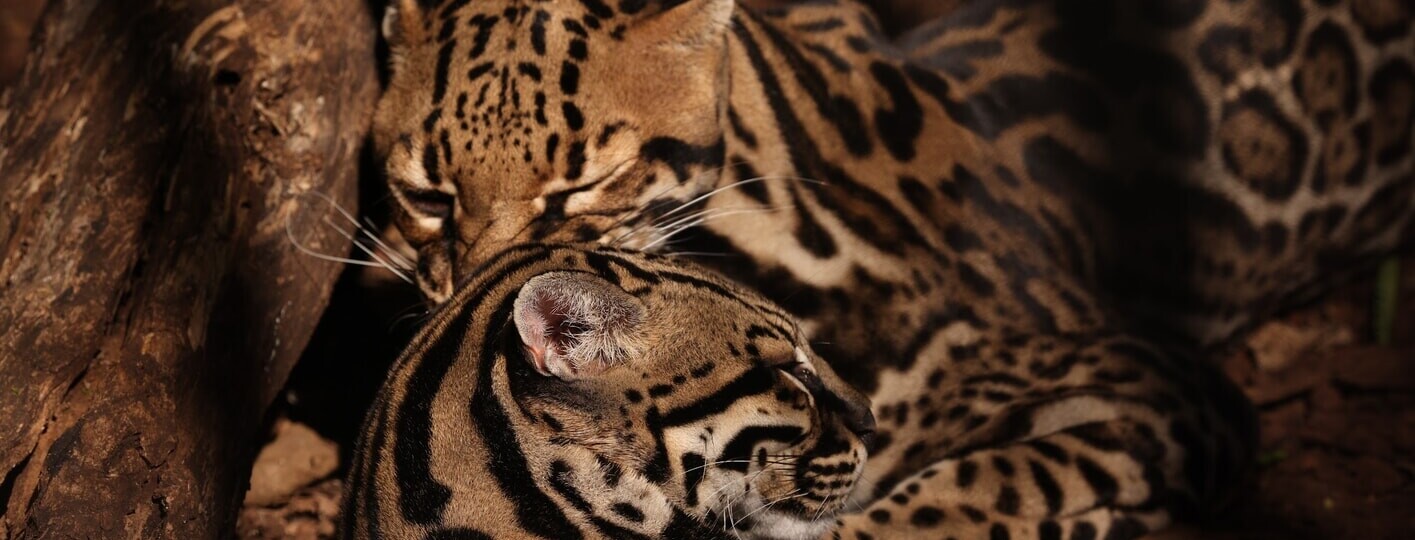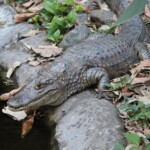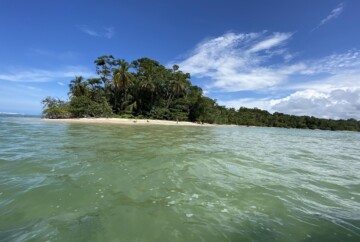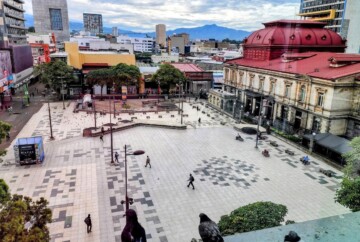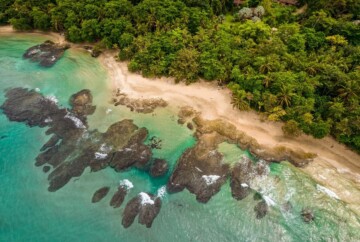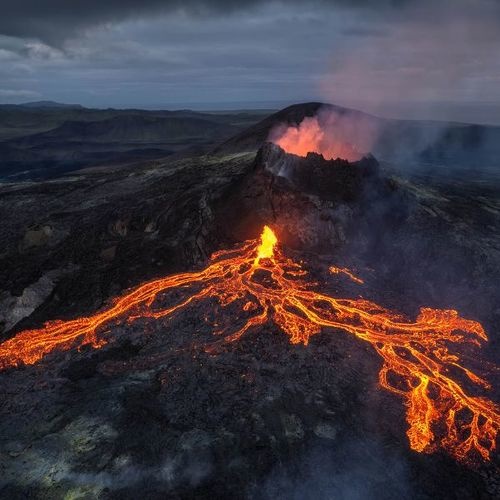When traveling abroad, get a policy from one of the best travel insurance companies. You can get a 5% discount on Heymondo, the only insurance that pays all medical bills upfront for you, HERE!
Are you thinking about visiting one of the animal sanctuaries in Costa Rica? This country is a true paradise for nature lovers, home to one of the most biodiverse ecosystems on the planet. But sadly, many animals face threats like deforestation, illegal trade, and habitat loss, putting their survival at risk.
That’s why, beyond exploring Costa Rica’s must-see attractions, I wanted to visit and support wildlife rescue centers that play a crucial role in protecting these animals. While many of these sanctuaries focus on rehabilitating animals and returning them to the wild, some become permanent homes for those that can’t be released—especially former pets or animals too injured to survive on their own. In this case, their mission is to give these creatures the best possible life in a safe, natural environment.
In this guide, I’ll introduce you to some of the most ethical animal sanctuaries in Costa Rica, where you can see incredible wildlife up close while contributing to their conservation. I encountered many of Costa Rica’s most iconic animal species here, so they’re definitely worth a visit!
How do animal sanctuaries in Costa Rica work?
Back in 2013, Costa Rica made history by completely banning caged zoos and ordering the closure of major facilities like Santa Ana and Simón Bolívar. This led to a huge increase in animal rescue centers, as the government relocated animals to ethical sanctuaries or released them back into the wild.
To ensure these rescue centers provide proper care, Costa Rica’s Ministry of Environment and Energy (MINAE) enforces strict regulations. Shelters must create medical records for every rescued animal, monitor their health, and ensure they live in species-appropriate conditions. Breeding is restricted to approved programs, and visitors aren’t allowed to handle the animals since human interaction can interfere with their rehabilitation.
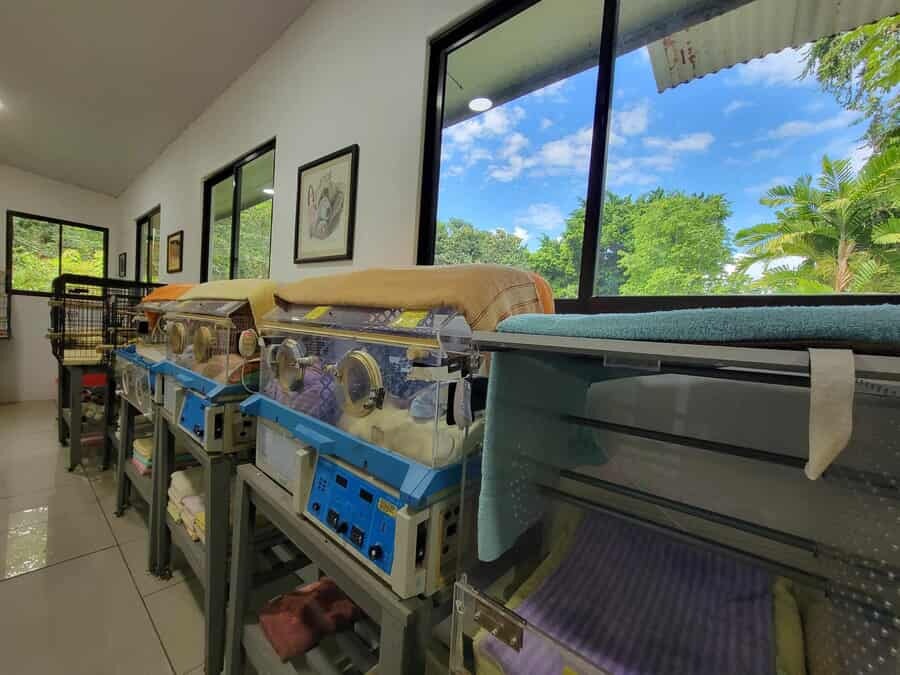
How do animal sanctuaries in Costa Rica work?
For me, choosing ethical sanctuaries that follow these rules was non-negotiable. I wanted to support places truly focused on animal welfare—not those treating rescued wildlife as a tourist attraction. The centers I visited provided spacious, naturalistic enclosures, allowing animals to regain their instincts. Seeing them up close was incredible, but knowing my entry fee or donation was directly helping with their care meant even more. Many sanctuaries also offer educational programs and hands-on workshops to teach visitors about conservation efforts.
If you love wildlife, visiting these animal sanctuaries in Costa Rica is a must. And if you can’t go in person, I’ve included donation links so you can still make a difference from afar!
1. Sloth Sanctuary in Costa Rica, one of the most reputable animal sanctuaries in Costa Rica
There are two types of sloths in Costa Rica: Hoffman’s two-toed sloth and the brown-throated three-toed sloth. These creatures typically live in Costa Rica’s national parks and dense forests. But unfortunately, as human developments expand closer to their natural habitats, sloths are increasingly found in dangerous places—crossing roads, climbing onto power lines, or wandering into residential areas where they’re at risk of injury.
That’s where the Sloth Sanctuary in Cahuita, Limón Province, comes in. It’s the most important sloth sanctuary in Costa Rica, dedicated to rehabilitating injured and orphaned sloths and, when possible, returning them to the wild.
Many of the sloths here have been victims of deforestation, traffic accidents, or electrocution from power lines. The sanctuary provides medical care, rehabilitation, and a safe environment where they can recover, while also educating visitors on how to protect these animals in the wild.
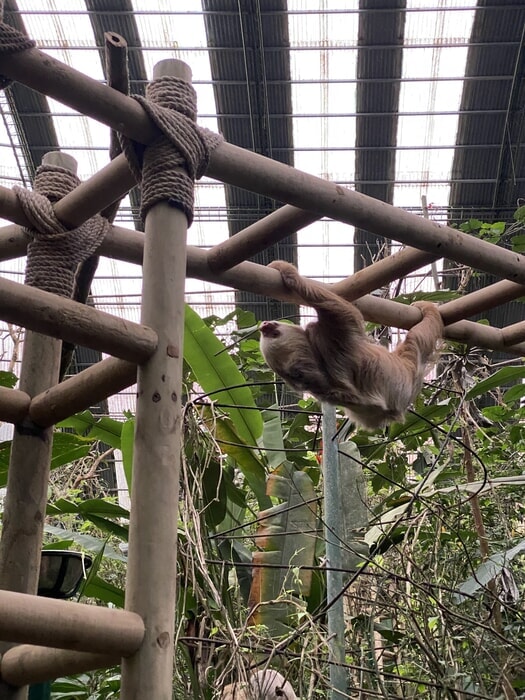
1. Sloth Sanctuary in Costa Rica, one of the most reputable animal sanctuaries in Costa Rica
The sanctuary is home to over 200 sloths, and you can visit through either a group or private tour to learn more about these fascinating creatures. The tours cover everything from sloth behavior and biology to the challenges they face in the wild and the conservation work being done to protect them. The sanctuary itself spans 790 acres of native forest, which is pretty large.
My favorite part was visiting the newborn intensive care unit, where tiny baby sloths receive round-the-clock care. Seeing them up close was absolutely heartwarming! If you’re looking for a hands-on experience, the sanctuary also offers volunteer opportunities, where you can help with feeding, cleaning, and caring for the animals.
- Hours: Daily, 8 a.m.–4 p.m.
- Location: Route 36, Kilometer 30 South of Limón, Limón Province, 7302
- Volunteering: Yes
- Price: 1-hour guided tour – $28 for adults (13+), $15 for children (5-12); tours depart on the hour. 2-hour private guided tour – $150 for adults (19–64), $75 for youth (6–18), $85 for seniors (65+); tours start at 9 a.m. and 1 p.m.
2. Costa Rica Animal Rescue Center, one of the most popular animal shelters in Costa Rica
The Costa Rica Animal Rescue Center has a heartwarming origin story. It all started in Limón when Marielos and her family took in a sick sloth named Budah. They nursed him back to health, and that experience sparked an idea—why not create a safe haven for other animals in need?
Around the same time, her daughter and son-in-law started patrolling the beaches to protect leatherback turtle eggs from poachers. Their passion for animal welfare kept growing, but when they were forced to leave their original location due to port construction, they didn’t give up. Instead, they relocated to Cedadilla and established the Costa Rica Animal Rescue Center.
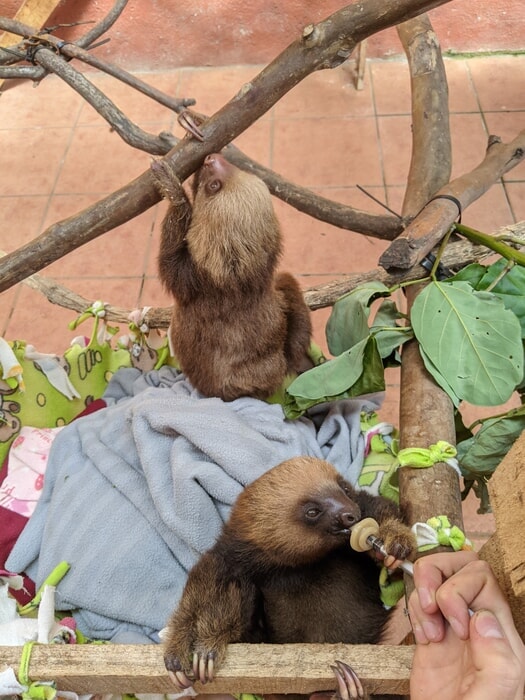
2. Costa Rica Animal Rescue Center, one of the most popular animal shelters in Costa Rica
The center’s mission is to rescue, rehabilitate, and, when possible, release both wild and domestic animals that have suffered abuse, mistreatment, or extreme trauma. Many of these animals have been exploited for tourism or sold illegally, so the center also works to educate visitors on how to avoid supporting unethical wildlife activities.
With only a small permanent team, the sanctuary relies heavily on volunteers who dedicate their time to caring for the animals. Daily tasks include feeding, cleaning enclosures, and maintaining the animals’ habitats. It’s hands-on work, but incredibly rewarding!
If you can’t volunteer or donate, booking a guided tour is another great way to support the rescue center. On the tour, you’ll get to meet rescued monkeys, jaguars, birds, reptiles, and other animals while learning their stories and gaining insight into the center’s conservation efforts.
- Hours: Daily, 9 a.m. – 2 p.m.
- Location: Juntas, Alajuela Province, Turrúcares
- Volunteering: Yes, $50 per day (includes lodging and meals)
- Price: 1-hour guided tour – $28 for adults (13+), $15 for kids (5-12). Tours start at 9, 10, 11 a.m., and 1, 2 p.m.
3. Las Pumas Rescue Center, a must-see animal sanctuary in Costa Rica
If you’re passionate about wildlife conservation, make sure to visit Las Pumas Foundation Animal Sanctuary. Located in Guanacaste, one of Costa Rica’s most stunning regions, this sanctuary focuses on rescuing and rehabilitating wild animals, especially felines like pumas and jaguars, which are often victims of illegal trafficking and habitat destruction.
The sanctuary is divided into different sections, some of which are completely off-limits to visitors. The Veterinary Clinic and Quarantine Area are among these restricted zones, as they require strict protocols to ensure the animals’ health and recovery.
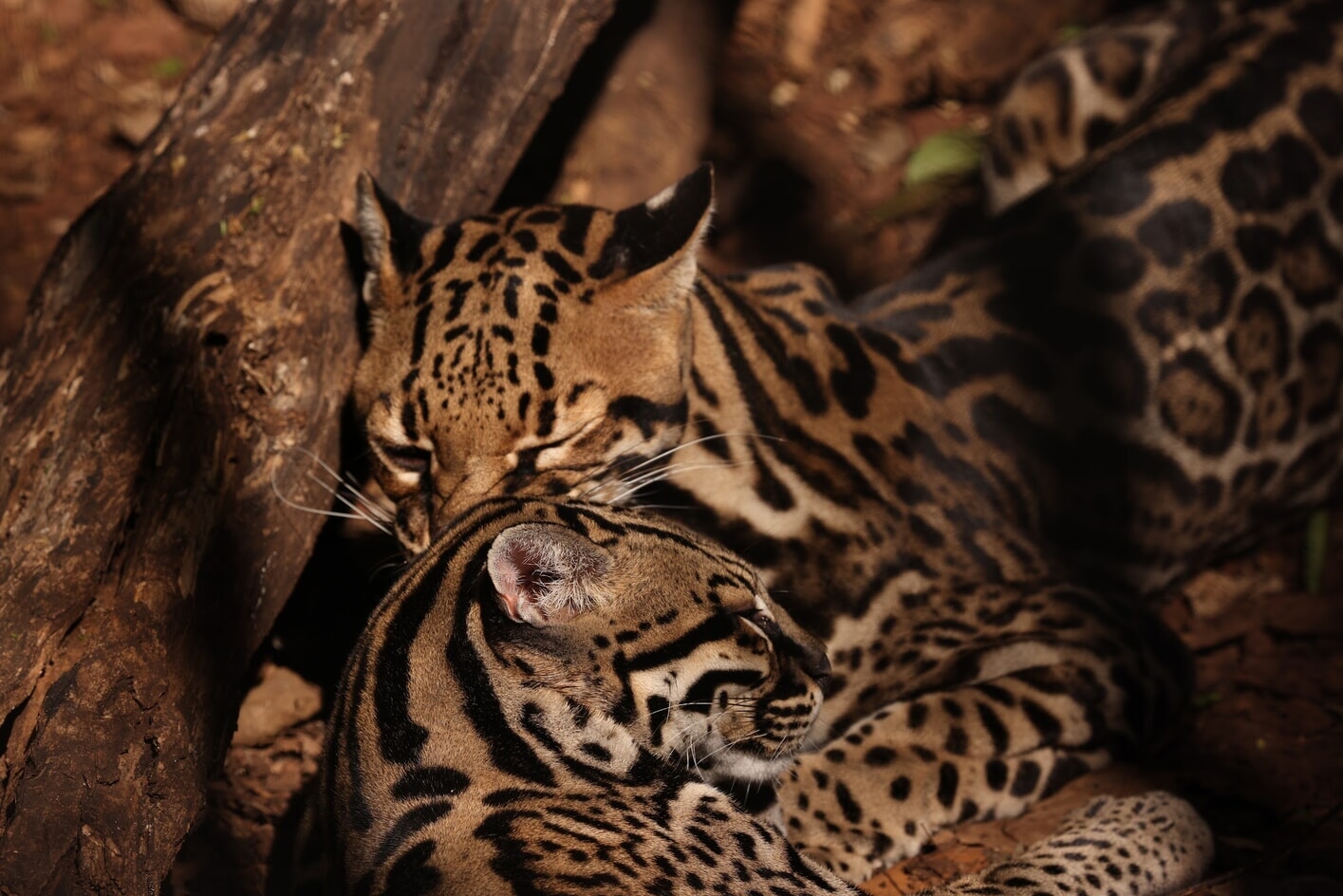
3. Las Pumas Rescue Center, a must-see animal sanctuary in Costa Rica
Another off-limits area is the Pre-Release Zone, a secluded space in the forest where animals relearn survival skills like hunting and self-defense before being released back into the wild. Monitoring here is done through camera traps, minimizing human interaction as much as possible.
Unfortunately, not all rescued animals can be reintroduced into the wild. Those that are unable to survive on their own are given a permanent home at the sanctuary, where they live in spacious natural enclosures. Visitors can take guided tours to see pumas, jaguars, ocelots, and even some unexpected residents like monkeys, birds, and reptiles. The guides do an amazing job sharing each animal’s story and providing insight into the conservation work being done to protect Costa Rica’s wildlife.
- Hours: Daily, 8 a.m. – 4 p.m.
- Location: 4.5 km from Cañas, heading toward Liberia on the Northern Inter-American Highway (look for the entrance on the right).
- Volunteering: Not available
- Price: ₡3,000 for Costa Rican nationals, $15 for foreigners
4. El Tucán Rescue Center, an amazing bird sanctuary in Costa Rica
The Toucan Rescue Ranch (TRR) started back in 2004 with a simple mission: to rescue, rehabilitate, and release Costa Rica’s stunning toucans, one of Costa Rica’s most beautiful exotic birds. But as word spread, more and more birds in need arrived. Then, in 2007, everything changed when a baby sloth was brought in. That moment opened the doors to a whole variety of species, and today, the rescue center cares for everything from owls and weasels to porcupines.
Beyond its rescue efforts, the center also breeds six different species of toucans in captivity to help conserve their populations. On top of that, it runs educational and research programs to raise awareness and ensure a bright future for Costa Rica’s wildlife.

4. El Tucán Rescue Center, an amazing bird sanctuary in Costa Rica
While TRR has an amazing team of international experts, volunteers play a huge role in daily care for the animals across different locations. The biggest of these is the release site, a sprawling 24-acre space where rescued animals prepare for life back in the wild. Zoology, biology, and veterinary students also gain hands-on experience here and learn about wildlife rehabilitation and monitoring.
If you visit, you can take a guided tour to see the rescue and rehab process up close. You’ll even get to sip some delicious local coffee while watching sloths lazily hang from the trees! If you want an even deeper experience, you can spend the night at the sanctuary and truly feel like part of the team for a day.
- Location: 700 meters east, 200 meters north, off Route 112, near downtown San Josecito, Heredia, San Isidro, Costa Rica
- Volunteering: Yes, there’s a $200 fee (refunded if you volunteer for more than 12 weeks). Accommodation costs range from $25 to $30 per night, depending on whether you stay at the rescue center or with a host family.
- Price: Sloth Walk (2.5 hours) – $62 for adults (11+), $32 for seniors (65+) and kids (6-10) | Bird Sanctuary Walk (2 hours) – $37 for adults (11+), $19 for seniors (65+) and kids (6-10) | Night Tour (1.5 hours) – $25 for adults (11+), $12 for seniors (65+) and kids (6-10) | Private Tours: 2-hour birdwatching tour for $275 per person, or a 2.5-hour sloth tour for $380 per person.
5. Wildlife Rescue Center (CREA), a sanctuary in Costa Rica for abused animals
The Wildlife Rescue Center (CREA) has an interesting past—it actually started as a private zoo in Alajuela. But in the late 1980s, Dennis Janik bought the property with a new vision: to rescue, rehabilitate, and transform the lives of animals in need. Fast forward to today, and the center is one of the largest animal sanctuaries in Costa Rica, rescuing over 2,700 animals every year, mostly birds and mammals that have been trafficked or abused.
Spanning over 35 acres, this sanctuary offers a network of trails for visitors to explore, though it’s impossible to see everything in one trip—there’s just so much to experience! The sanctuary even has a restaurant, an ice cream shop, picnic areas, and a souvenir shop. If you’re visiting with kids, they’ll love the mini-farm, where they can meet friendly domestic animals like horses, donkeys, pigs, sheep, chickens, and rabbits.
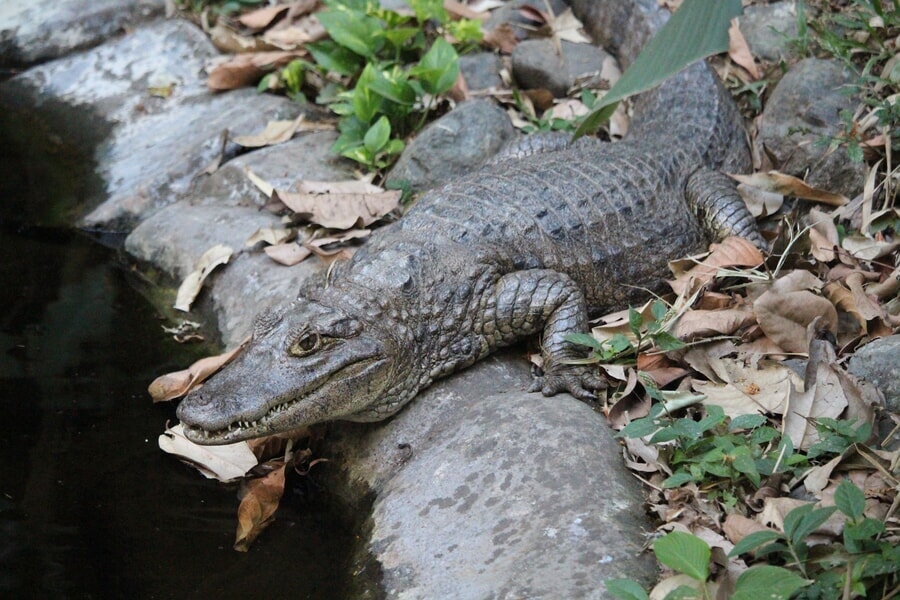
5. Wildlife Rescue Center (CREA), a sanctuary in Costa Rica for abused animals
A guided tour takes you through the wildlife rehab center, endangered species breeding program, and the animal sanctuary, home to more than 125 species. It’s a perfect mix of education, conservation, and fun! If you’re looking to get even more involved, the center also offers internships and volunteer opportunities, but you’ll need to apply online in advance.
- Hours: Daily, 9 a.m. – 5 p.m.
- Location: 2.3 km east of Manolo’s intersection, Route 3, San José neighborhood, Alajuela Province, Alajuela, Costa Rica
- Volunteering: Yes, internships and volunteer programs are available. Prices vary based on the program and season.
- Price: General Admission – $35 for adults (13-64), $15 for kids (2-12), and $30 for seniors (65+) | Admission + Guided Walk – $50 for adults (13-64), $25 for kids (2-12), and $45 for seniors (65+).
6. Costa Rica Animal Shelter, an animal sanctuary in the heart of San José
If you’re in San José and looking for a break from the city buzz, the Costa Rica Animal Shelter is just the place. Located just minutes from downtown, this sanctuary is a safe haven for rescued and abandoned animals, offering them a second chance at life.
Each year, around 1,500 animals arrive at the shelter, and the team works hard to release at least 70% of them back into the wild. The ones that can’t be reintroduced stay here, getting all the care and attention they need.
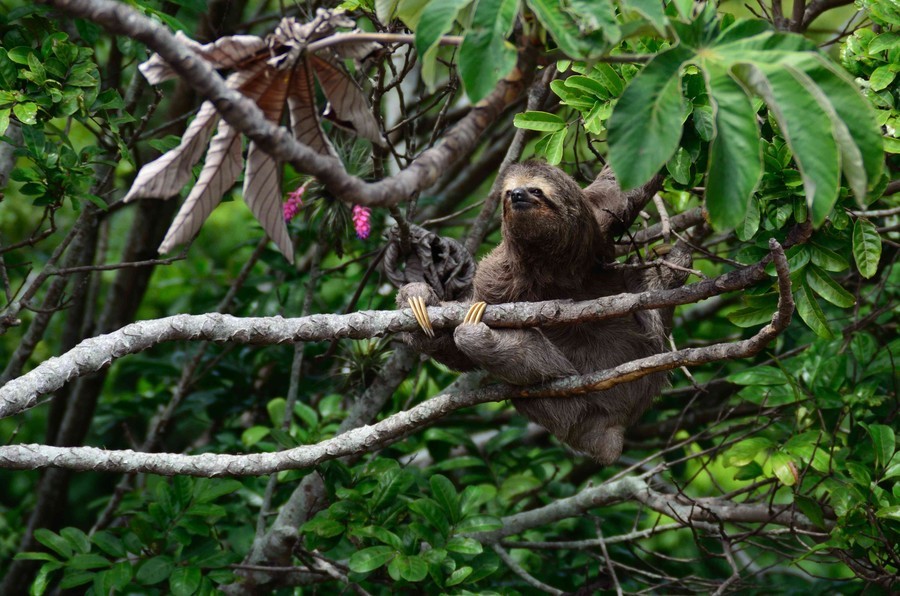
6. Costa Rica Animal Shelter, an animal sanctuary in the heart of San José
On a guided tour, you’ll meet over 75 different Costa Rican species, from colorful birds to playful mammals and fascinating reptiles. But if you want to get even more involved, you can apply to volunteer and help with animal care firsthand at one of the best animal sanctuaries in Costa Rica.
Beyond its rescue efforts, the shelter also focuses on environmental education, teaching visitors about wildlife conservation and responsible tourism.
- Hours: Open daily, 9 a.m. – 4:30 p.m.
- Location: San José, Santa Ana, 10094, Costa Rica
- Volunteering: Yes, $55 per day (minimum one week). Includes meals and lodging.
- Price: Guided tour + admission – $30 for adults (13-64), $15 for kids (2-12), and $25 for seniors (65+)
7. Jaguar Rescue Center, one of the animal sanctuaries on Costa Rica’s Caribbean coast
If you’re visiting Puerto Viejo de Talamanca, make sure to visit the Jaguar Rescue Center—one of the top animal sanctuaries in Costa Rica. This center is dedicated to rehabilitating injured and sick animals and nursing them back to health before releasing them into the wild.
The center was named after the first jaguar it rescued, but today, it’s home to a wide variety of animals, including reptiles, birds, and small primates. While the main mission is to release the animals, some—around 90—remain at the center permanently because they wouldn’t survive on their own.
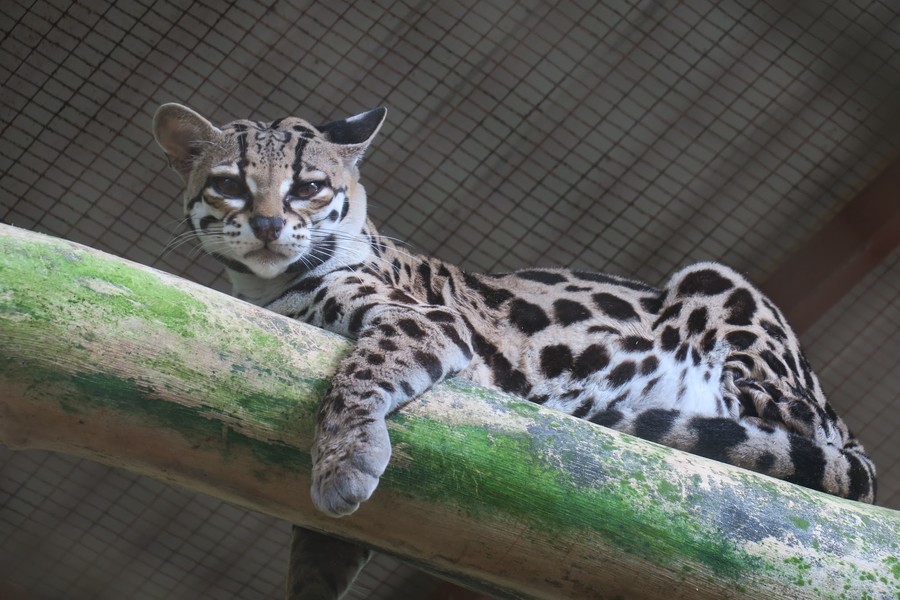
7. Jaguar Rescue Center, one of the animal sanctuaries on Costa Rica’s Caribbean coast
Beyond rescue efforts, the center is also a research hub, where scientists from all over the world study wildlife conservation. They even offer veterinary internships, giving students hands-on experience in animal rehabilitation.
A guided tour is a great way to learn about the animals’ stories and the incredible work being done here. Plus, all proceeds from the tours go straight back into helping the animals!
- Hours: Open daily, 9 a.m. – 1 p.m.
- Location: In front of Villas del Caribe, Limón, Punta Cocles, Costa Rica
- Volunteering: Yes, standard 4-week program (28 nights minimum) – $825, including accommodation
- Price: Public tour (1.5 hours) – $22 per person | Private tour – $75 per person | Exclusive after-hours tour – $75 per person (starts at 2 p.m., after the center closes)
8. Alturas Wildlife Sanctuary, one of the best animal rescue centers in Costa Rica
Alturas Wildlife Sanctuary is a must-visit for all animal lovers, and it’s located just 10 minutes from Playa Dominical and 15 minutes from Uvita. Not only can you meet rescued animals, but you can also combine your visit with some of the region’s best tourist spots!
This sanctuary specializes in providing veterinary care and rehabilitation for endangered wildlife—whether they’re injured, orphaned, or abandoned. Over the years, they’ve rescued more than 2,000 animals, making a huge impact on Costa Rica’s wildlife conservation efforts.

8. Alturas Wildlife Sanctuary, one of the best animal rescue centers in Costa Rica
Alturas is fully equipped with a specialist veterinary clinic and employs two full-time vets. You’ll get to meet an incredible variety of animals, including jaguars, macaws, pumas, sloths, and several species of monkeys and birds. Since the sanctuary is constantly rescuing and releasing animals, you’re likely to see something new with every visit.
If you want a deeper dive into the sanctuary’s work, consider joining one of their daily guided tours or even volunteering for a more hands-on experience. There are also longer volunteer programs available at Alturas animal sanctuary in Costa Rica if you want to spend more time helping out.
- Hours: Tuesday to Sunday, 9 a.m. – 3 p.m.
- Location: San Martin Nte Street, Puntarenas Province, Dominical, Costa Rica
- Volunteering: Yes, for $30 per day (including lunch).
- Price: 5-hour guided tour – $33 for adults, $17 for children (3-12). Tours are available at 9 a.m., 11 a.m., and 1 p.m., and are conducted in English.
9. Sibu Wildlife Sanctuary, a fascinating monkey sanctuary in Costa Rica
Sibu Wildlife Sanctuary is a small but mighty rescue center tucked away in Nosara, a popular beach town in Guanacaste. While the sanctuary may be on the smaller side, it partners with various organizations and experts to provide top-notch care for the animals that call it home.
The main focus of the sanctuary is providing veterinary care, but what makes it special are the unique therapies they offer, like physiotherapy and sensory stimulation. These help animals stay connected to their natural surroundings, which is key for their recovery.
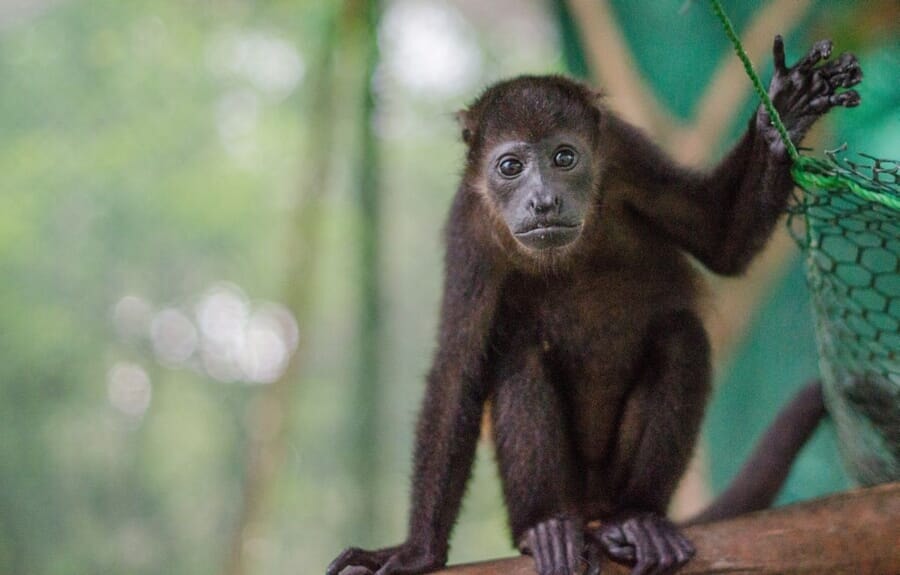
9. Sibu Wildlife Sanctuary, a fascinating monkey sanctuary in Costa Rica
While Sibu welcomes a variety of native species, its main focus is on howler monkeys, one of Costa Rica’s iconic monkey species. One of the sanctuary’s most vital projects is building bridges for the monkeys to safely cross areas, avoiding the danger of electrical wires, poles, or crossing the ground where they face the risk of being attacked by dogs or struck by vehicles.
Sibu offers guided tours that are intimate and personal, with only a small group allowed each week. Because of this, there is often a waiting list, so it’s best to plan ahead! The hike is short but can be a little bumpy, so the minimum age to join is 5 years old. It’s a magical experience, so don’t miss it!
- Hours: Tuesday, Thursday, and Saturday, 9:30 a.m. – 11:30 a.m.
- Location: Sports Plaza of the Town, Province of Guanacaste, Santa Marta, 50206, Costa Rica
- Volunteering: Yes, $380 per month (includes accommodation). Minimum 3-month commitment required.
- Price: $60 per person, limited to 15 people per day
10. International Animal Rescue (IAR), one of the best wildlife sanctuaries in Costa Rica for volunteers
If you’re looking to make a real impact, the International Animal Rescue (IAR) is one of the best animal sanctuaries in Costa Rica where you can lend a hand. Not only can you adopt a pet from them, but when you do, you’ll receive a special package that includes a certificate, a digital photo of your new furry friend, exclusive details about the animal, and even a cute stuffed animal to take home!
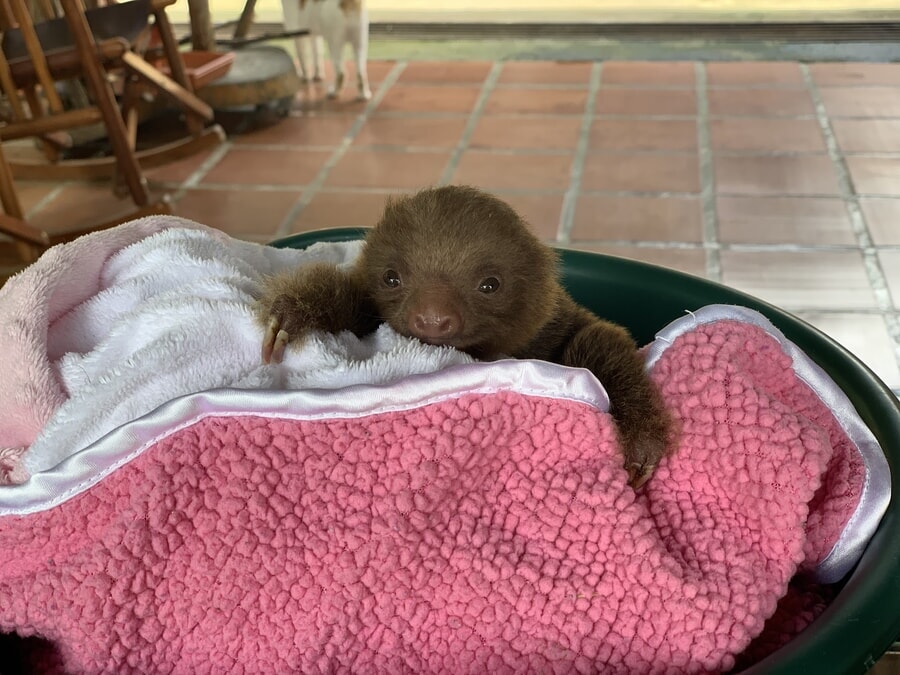
10. International Animal Rescue (IAR), one of the best wildlife sanctuaries in Costa Rica for volunteers
But adoption is just one way to get involved. You can also volunteer, work with the team, or donate money to support their efforts. The sanctuary is committed to rescuing and rehabilitating animals, but what really sets them apart is their close collaboration with local communities. By working together with the people who know the land best, IAR ensures that their solutions are sustainable and that humans and animals can coexist peacefully.
On top of their animal rescue work, IAR is also making significant strides in rainforest protection. For example, they’ve planted an impressive 16,000 plants over the past year, covering approximately 7,400 acres with native species.
- Hours: Daily, 10:30 a.m. – 12 p.m., and Tuesday, Wednesday, and Thursday, 3:00 p.m. – 4:30 p.m.
- Location: The Old Dump Road, Guanacaste Province, Nosara, 50206, Costa Rica
- Volunteering: Yes, you must fill out a form on the website for more information.
How to know which animal sanctuaries in Costa Rica are ethical
In addition to the amazing animal sanctuaries in Costa Rica I’ve already mentioned, there are plenty of others around the country. But how do you know which ones are truly ethical and that your visit is making a real difference? Here are a few things to keep in mind:
- No direct interaction with animals. A responsible sanctuary will never allow you to touch, feed, or interact with the animals, whether they’re permanent residents or being rehabilitated for release.
- No unnecessary breeding. Ethical sanctuaries don’t breed animals just to keep them in captivity. The only exceptions should be for endangered species, and even then, the goal is to eventually release them back into the wild. Births are not for publicity or to lure more tourists—they’re about conservation.
- Rehabilitation and release are top priorities. An ethical sanctuary’s primary goal is to rehabilitate and release animals into their natural habitats. If animals remain in the sanctuary, it’s because they can’t survive on their own. Avoid places that keep animals just to attract visitors.
- Animals live in natural, spacious environments. The animals’ living spaces should be as comfortable, clean, and as close to their natural habitat as possible. If the sanctuary tells you they can guarantee you’ll see a specific species, it’s likely that the space isn’t large enough for them to live freely.
- No hands-on sloth selfies! Sloths are often subjected to harmful human interaction in certain sanctuaries, which can cause stress, illness, and even death. If you see places offering photos with sloths, it’s a red flag. Photograph them from a distance and support places that prioritize their well-being.
Map of animal shelters in Costa Rica
Below is a map of every animal refuge in Costa Rica I’ve mentioned in this post:
If you have any questions or want to share your experiences visiting one of these sanctuaries or volunteering with animals in Costa Rica, feel free to leave a comment below.
Enjoy your travels!
